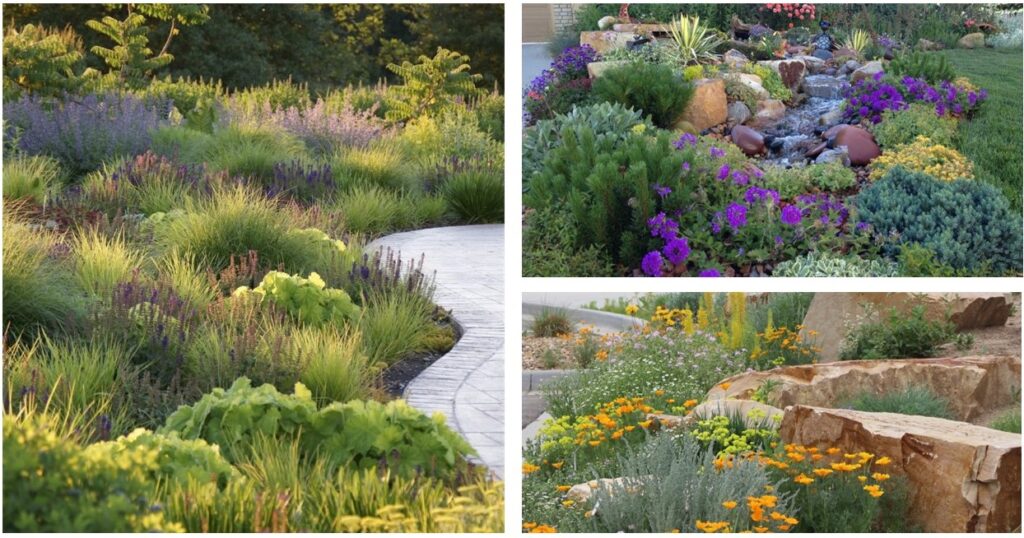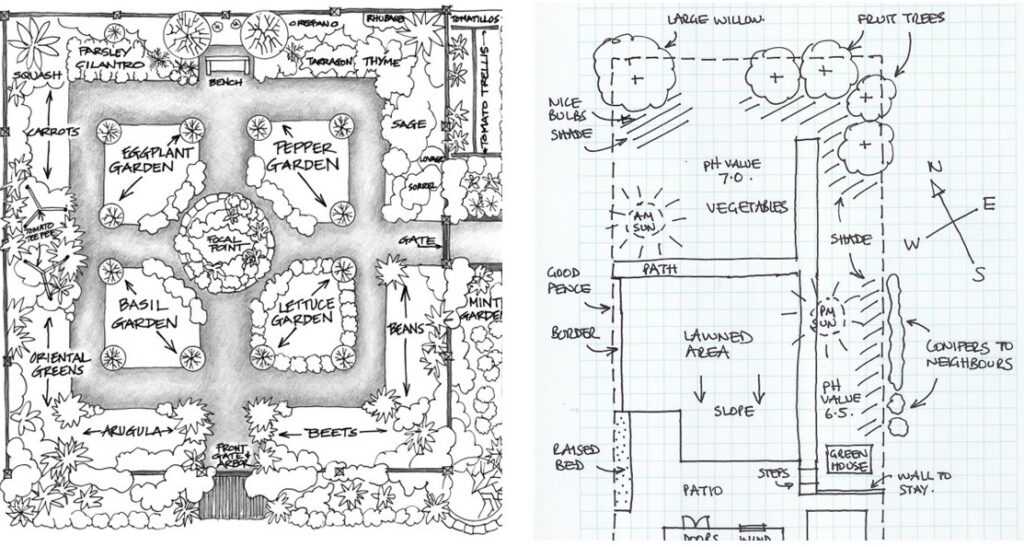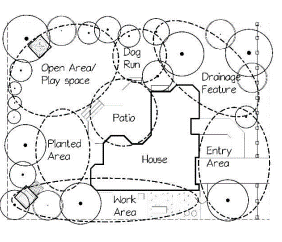Designing Your Dream Garden
- 2024-09-07
- By mkirk
- Posted in Horticulture, The Garden Buzz
By Kathi Thistlethwaite, Colorado Master Gardener

Would you like to create a beautiful garden or enhance an existing one? Then keep reading! Starting with this issue, The Garden Buzz will be presenting a series of six articles to help gardeners create a well-designed outdoor space. We’ll start with The Design Process in this installment and wrap up with “Putting It All Together” in July 2025.
Photo: gabberts.com
The Design Process
The design process involves planning and making decisions about something for a specific purpose, which in turn creates an aesthetically pleasing space. It is important to remember that design is intentional. The choices you make are intentional; they will reflect appropriate use of the space and fulfillment of your wishes.
Where to start? It may seem daunting, but breaking the process down into discrete steps makes the process easier.
- Create a mood board. Collect appealing images (Instagram, Pinterest, Google search) and ideas that are inspirational for the space, whether redoing an existing garden or starting a new garden.

- Consider the style of the house, its surroundings and what type of garden would be compatible. A French Normandy house with a cactus garden would not be compatible.
- Write down how the space is used or will be used. If changes are desired, this is the time to consider them. For example, if the kids are gone and the play equipment must go, reclaim that space for a raised bed vegetable garden or a potting shed.

- Make note of special features to incorporate in the space – panoramic views, outdoor garden art or a bench for enjoying the garden’s peace and harmony. Make note of unsightly views to block.
The steps of design are straightforward whether starting from scratch or renovating an existing space:
- Take an inventory of what is in in the space. This will identify existing plants, hardscape, sun and shade, type of soil, how water drains or settles. Understand the challenges and limitations before bringing in new elements.
- Sketch it out. This is a rough sketch, nothing fancy – just for you.

- Fill in the diagram with notes about what is there.
- Note the existing plant material – what to keep and what to remove.
- Note the sunny and shady areas. This will affect your choice of plants later on.
- Note the soil type. For questions about your soil, send a sample to the CSU Soil Test Lab. The results show the current breakdown of the soil and suggest amendments. https://agsci.colostate.edu/soiltestinglab/
- These notes will help make decisions going forward and make the design intentional.
- The last step is to create a bubble diagram (below). Trace over the existing diagram you made and encircle areas of activities. This will help you to see if the areas of activity are well organized so there is good flow. You can do many different tracings arranging the functional areas.

The process outlined here provides a starting place and an organized approach for designing your perfect garden. It is an iterative process of defining and refining as you consider all the possibilities. Once the design has gone from an idea to an actual sketched plan, it’s time to incorporate principles of design as a guide to execute the plan.
Happy gardening!
NEXT INSTALLMENT: Principles of Design: Order and Unity
NOTE: All articles in this series and past issues of The Garden Buzz News Letter can be found at https://arapahoe.extension.colostate.edu/cmg-newsletter-archive/
Online resources:
- Plant Select: www.plantselect.org Design ideas and downloadable designs that show plant combinations
- CSU Extension: www.extension.colostate.edu Native plant garden guides with plant lists, planting plans and designs
Horticulture Resources
- Garden Buzz Archives
- CSU Extension Resources
- Colorado Master Gardener Program
- Foothills to Plains Native Plant Master Program
- Native Bee Watch Community Science Program
- The Co-Hort Blog
- PlantTalk Colorado
- Soil Testing
- Plant Select
- Emerald Ash Borer
- Japanese Beetle
- Colorado State Forest Service
- Ask an Expert


